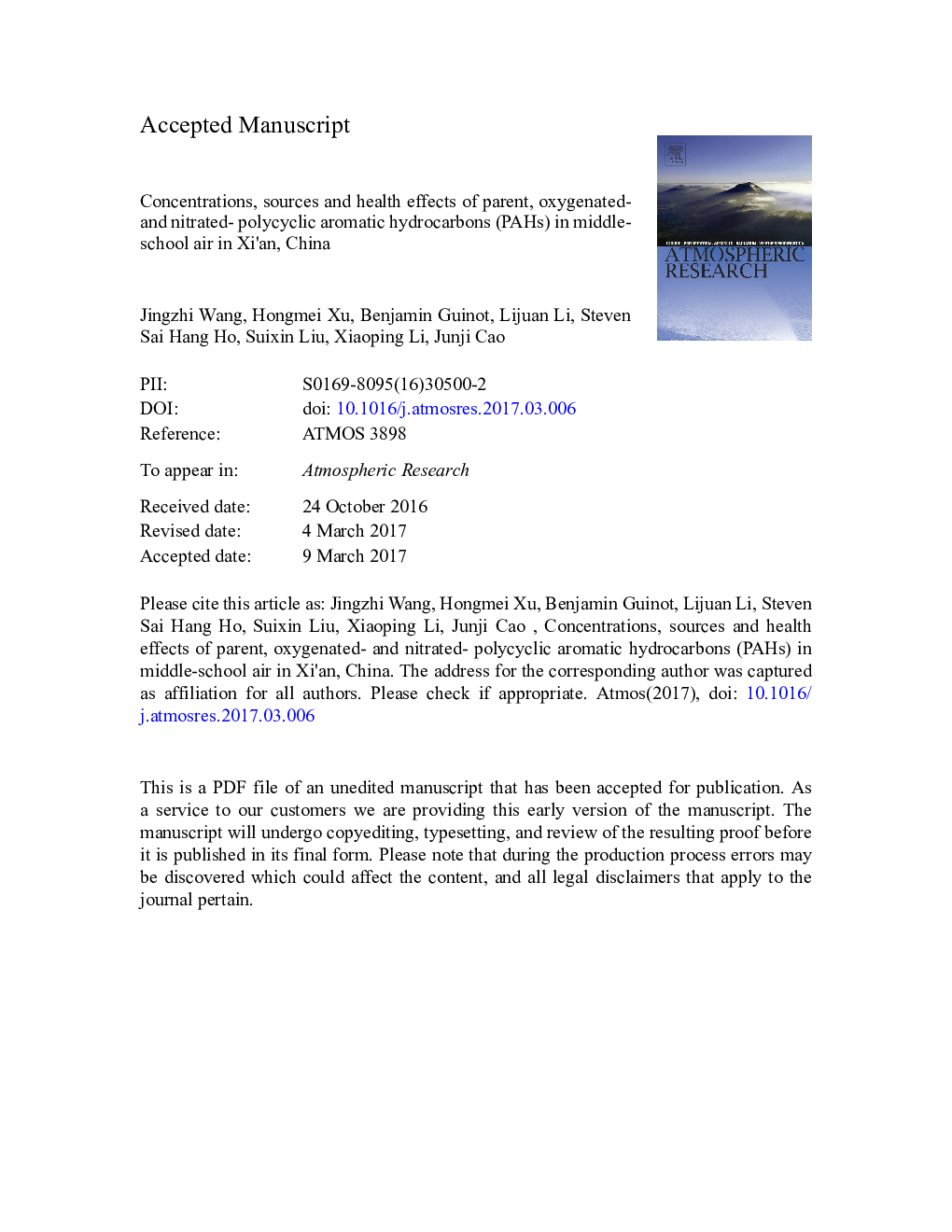| Article ID | Journal | Published Year | Pages | File Type |
|---|---|---|---|---|
| 5753810 | Atmospheric Research | 2017 | 41 Pages |
Abstract
Indoor and outdoor concentrations of polycyclic aromatic hydrocarbons (PAHs), oxygenated-PAHs (OPAHs), and nitro-PAHs (NPAHs) associated with PM2.5 particles were monitored in a middle-school classroom from 8 to 22 March 2012 in Xi'an, China. The total PAHs ranged from 49.6 to 140.0 ng/m3 in outdoors and 50.3 to 111.6 ng/m3 in indoors, while OPAHs and NPAHs showed averages of 19.1 and 16.4 ng/m3, 0.1039 and 0.0785 ng/m3 for outdoor and indoor air, respectively. Strong correlations were found between indoor (I) and outdoor (O), and the I/O ratios were < 1 for almost all the species, indicating that outdoor air was the dominant influence on indoor air. Diagnostic ratios and Positive Matrix Factorization (PMF) analysis indicated that biomass burning, coal combustion, and motor vehicle emissions were the main sources for PAHs (which accounted for 30%, 27.4% and 26%, respectively, by PMF), but, secondary particle formation was important for the OPAHs and NPAHs. Inhalation cancer risks associated with outdoor and indoor particles were 6.05 Ã 10â 5 and 5.44 Ã 10â 5, respectively, and so higher than the cancer risk guideline of 10â 6. Although the cancer risk of NPAHs is negligible for its lower concentrations, their potential for direct mutagenic effects should not be ignored.
Related Topics
Physical Sciences and Engineering
Earth and Planetary Sciences
Atmospheric Science
Authors
Jingzhi Wang, Hongmei Xu, Benjamin Guinot, Lijuan Li, Steven Sai Hang Ho, Suixin Liu, Xiaoping Li, Junji Cao,
